FAB Model Analysis
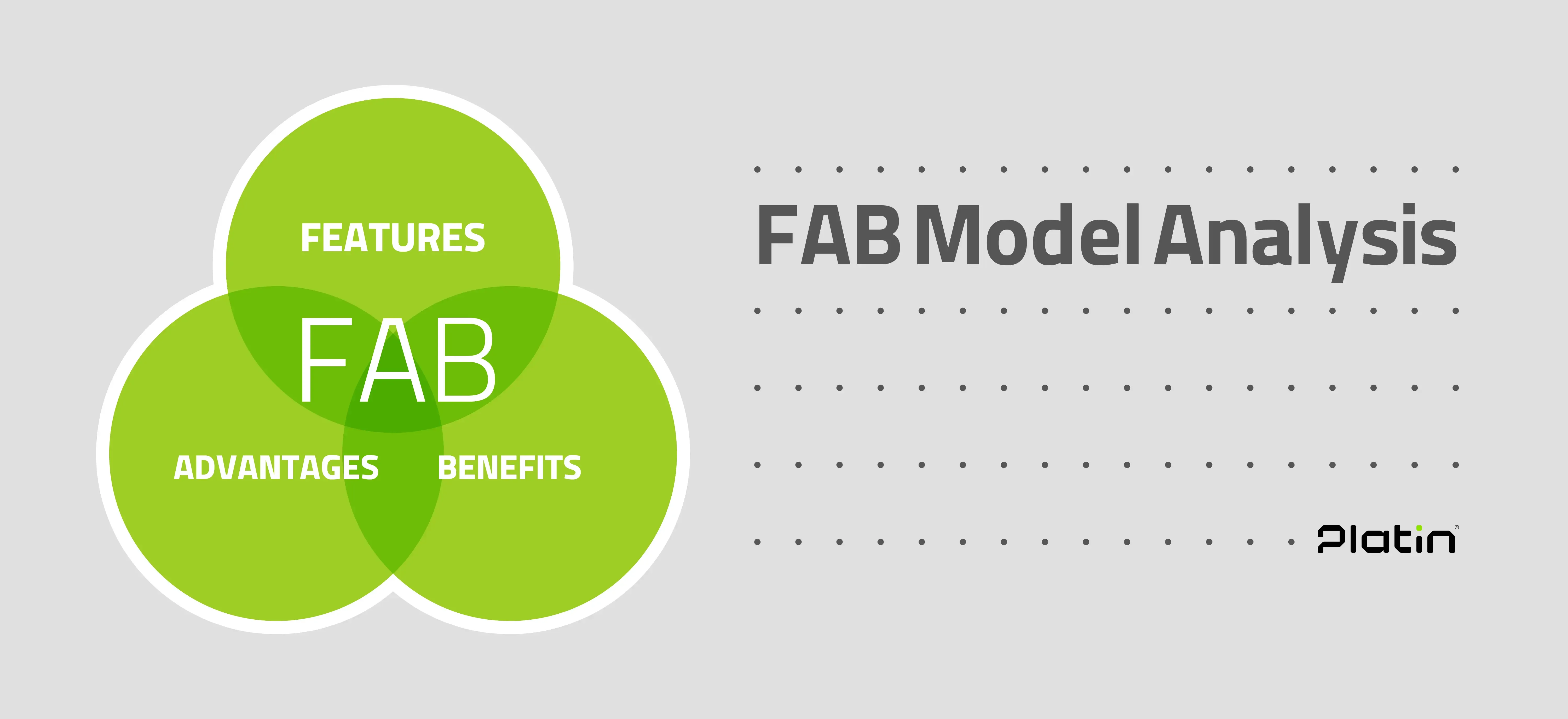
Introduction
In many businesses, products or services are technically excellent, yet sales or audience engagement do not happen effectively. This issue becomes particularly noticeable when two brands with similar quality achieve completely different results in a competitive market. Why does a product with the same quality sell significantly more? In many cases, the answer lies in how the product is presented and how the message is conveyed.
In a world where brands compete daily with thousands of advertising messages, if the real value of a product cannot be communicated in the language of the audience, even the best products are ignored. Focusing solely on technical features is not enough; the audience wants to know what difference these features make in their life or experience. This is where “differentiation from competitors,” “building trust,” and “enhancing customer experience” become vital factors in marketing communications.
Here, the FAB model—short for Features, Advantages, and Benefits—emerges as a key tool in modern marketing. This model helps businesses shift from an inward-focused perspective to a customer-centric approach; instead of saying “what we have,” it explains “what this means for you.” Such a shift not only increases sales but also fosters trust and builds a deeper, long-term connection with the customer.
For example, saying “This product has a 5000mAh lithium battery” may be useful for some, but saying “With this battery, you can use your phone for a full day without recharging” connects the message to the audience’s everyday experience. This is where trust forms, differentiation occurs, and the likelihood of purchase increases.
Although the FAB model may seem simple at first glance, in practice, it provides a structured, flexible, and persuasive framework for crafting marketing and sales messages—messages that not only inform but also influence, build trust, enhance customer experience, and help the brand stand out in the mind of the audience.
Components of the FAB Model
The FAB model consists of three components, each forming the foundation for the next. These three components are:
- Feature
A feature refers to a technical, visual, or functional specification of a product or service. These details are usually technical and need to be translated into simple, understandable language to be attractive and persuasive to the audience. For example, having a temperature sensor in an air conditioner is a technical feature that should be explained in a simple way for the audience. - Advantage
An advantage answers the question of how a feature contributes to better performance of the product. It is the bridge connecting the feature to the benefit for the user. In the above example, the advantage of a temperature sensor is more precise environmental control, enhancing customer experience through greater convenience and control over the surroundings. - Benefit
The most important part of the model is the benefit, as the audience’s decision is ultimately based on it. Benefits usually directly address the needs or concerns of the audience, such as cost reduction, time savings, improved health, or increased comfort. Continuing the air conditioner example, the benefit is that the user always lives or works in an environment with the desired temperature without constant adjustments. This experience not only helps build customer trust but also increases the likelihood of purchase through word-of-mouth recommendations and greater satisfaction.
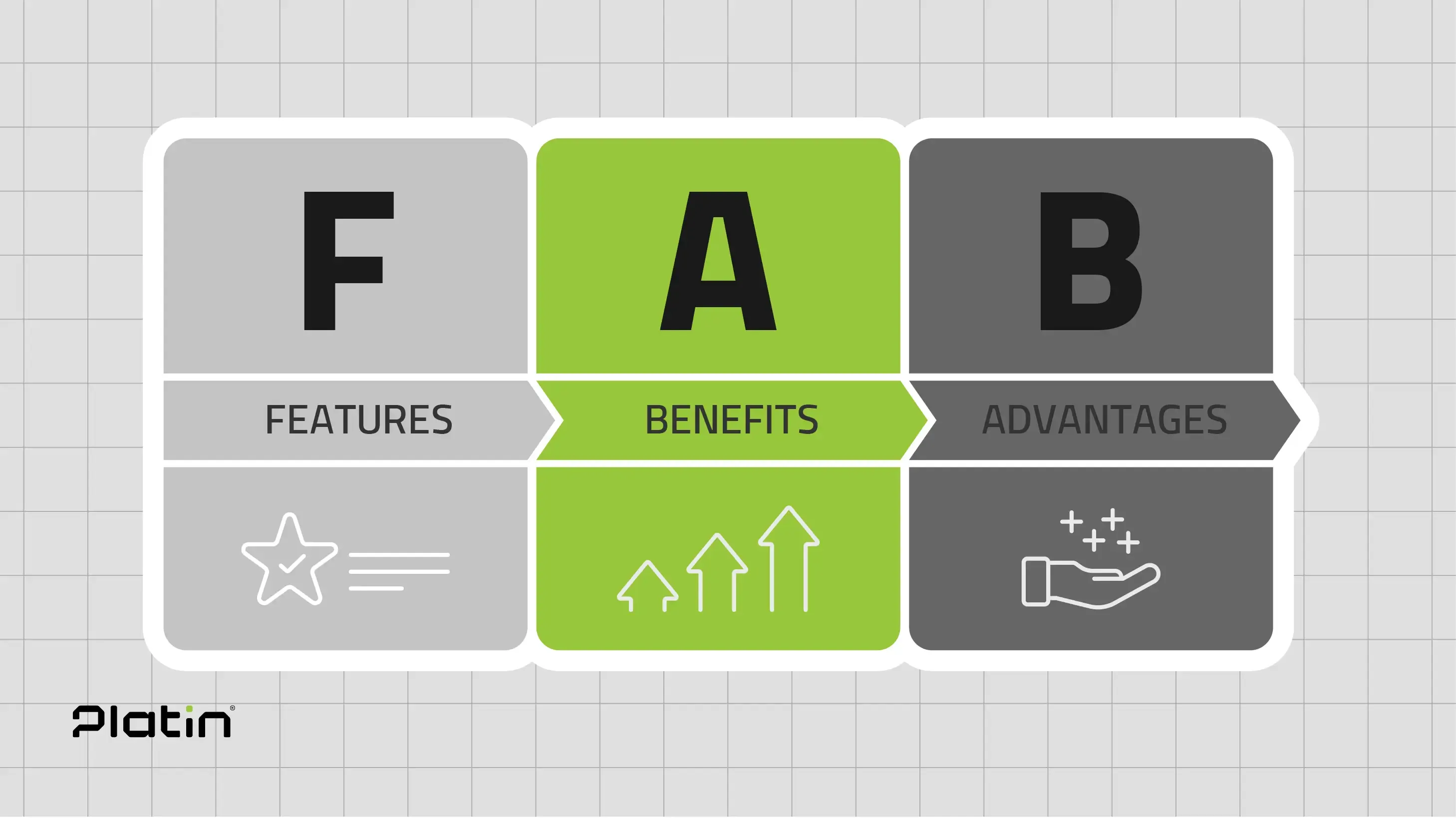
Importance of the FAB Model in Modern Marketing
Today’s customers are faced with a large volume of advertising messages and marketing promises. In this context, only brands that can deliver their message clearly, persuasively, and aligned with audience needs will succeed. Using the FAB model allows brands to move beyond merely describing features and focus on demonstrating the real value of the product to the audience. This model enables brands to differentiate themselves from competitors, capture audience attention, and guide them toward desire and decision-making. In other words, the FAB model serves as a bridge between product language and customer mindset, facilitating trust and loyalty.
Advantages of Using the FAB Model
- Message Clarity: Use simple, clear, and precise sentences to present product features in a way the audience can easily understand.
- Customer-Centric Focus: Emphasize benefits and address the audience’s needs and concerns, ensuring the customer is the center of attention and their experience is tangibly improved.
- Effective Differentiation: Highlight advantages that distinguish the product from competitors and create a unique place in the customer’s mind.
- Emotional Engagement: Creating an emotional connection with the audience ensures that product messages and benefits have a deeper impact, influence decisions, and ultimately increase sales.
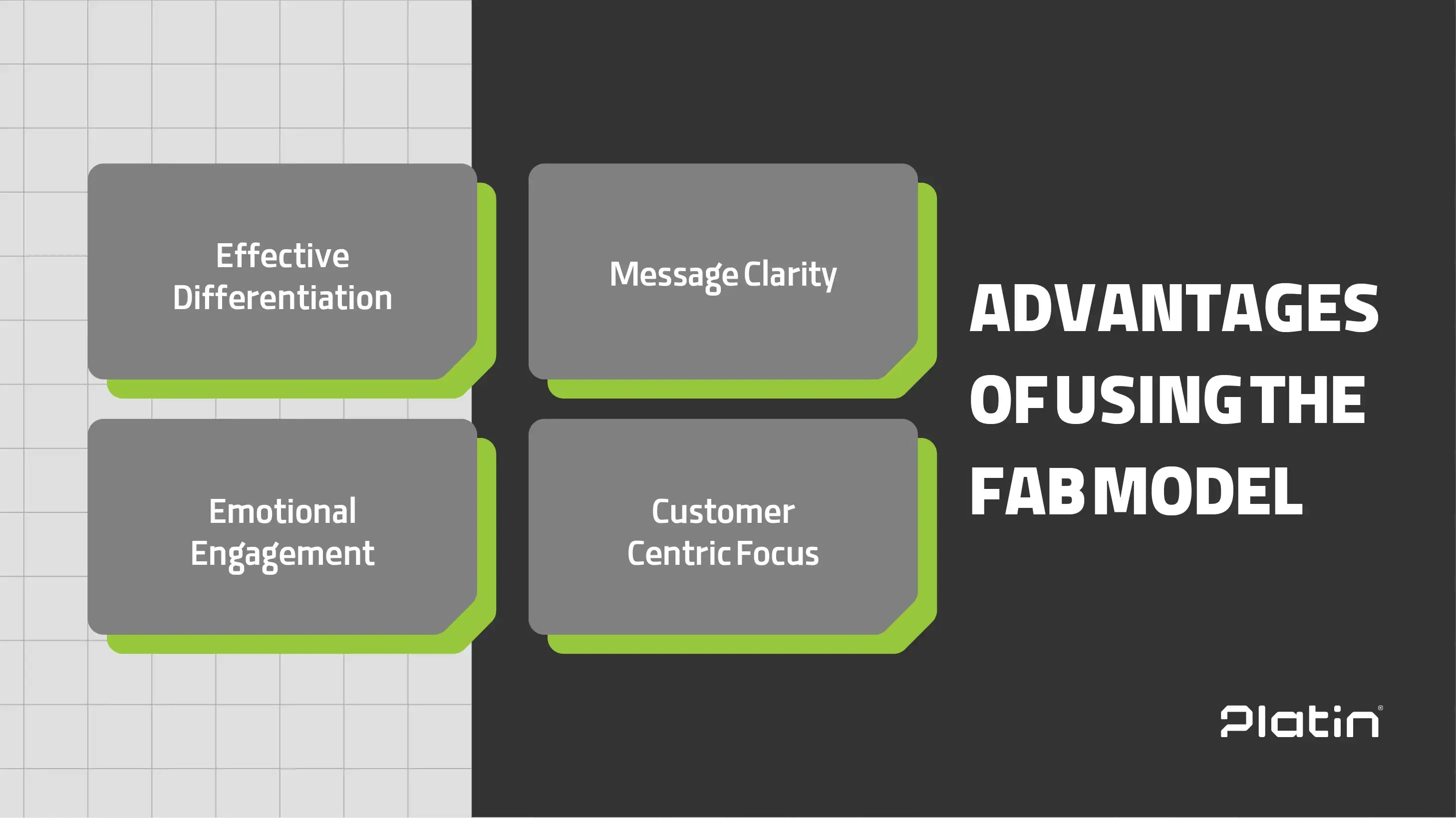
Implementing the FAB Model in Content Creation
To use this model effectively in content marketing, the following steps can be followed:
- Identify Features: Document all technical, visual, or functional specifications of the product or service.
- Analyze Advantages: Explain how each feature improves performance or user experience.
- Extract Customer Benefits: Assess from the audience’s perspective what value or gain the advantage brings.
- Transform Information into Persuasive Messages: Present the collected data in formats such as website copy, product descriptions, advertisements, or videos in a compelling and understandable way to increase sales.
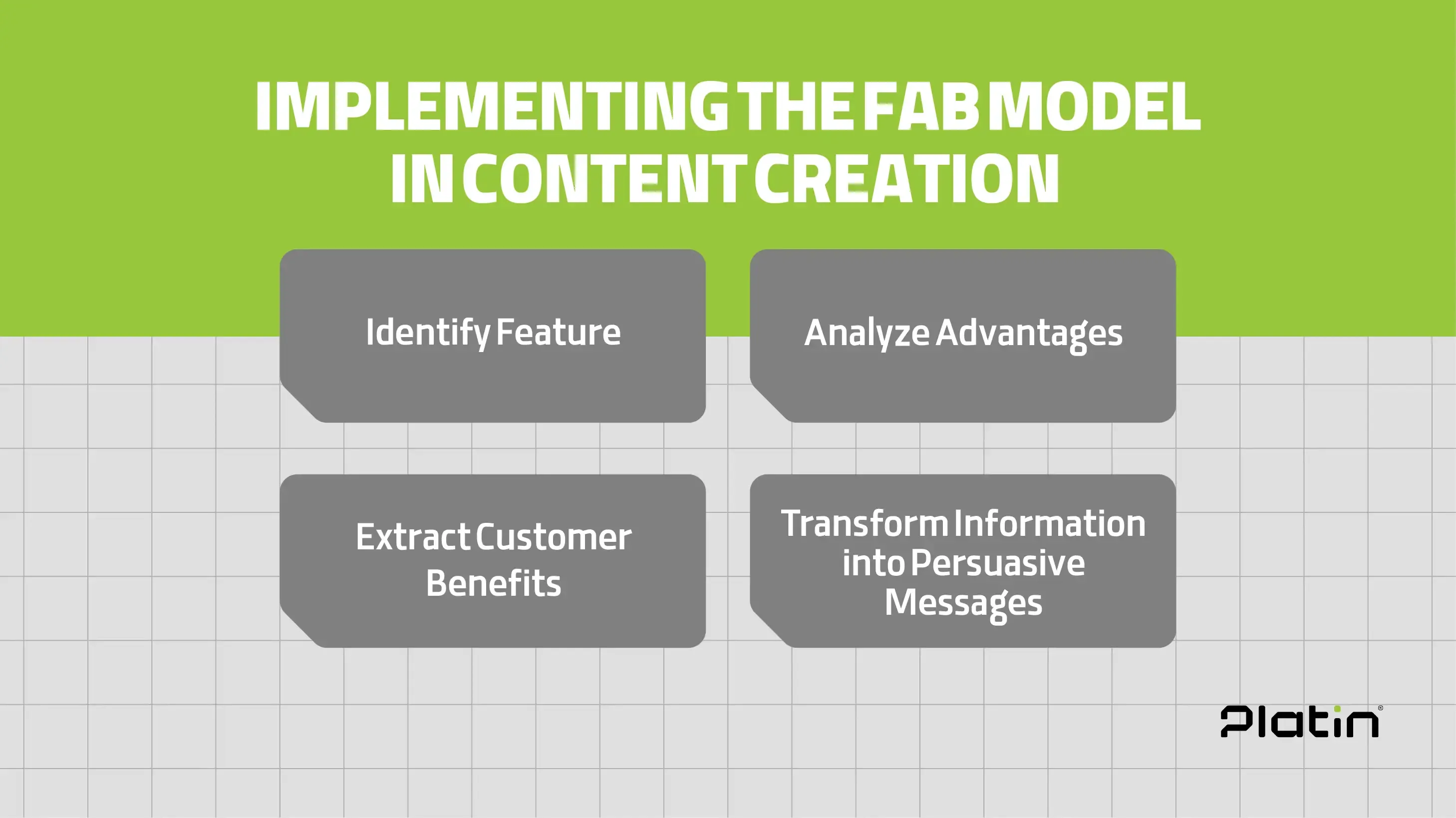
Key Notes for Implementing the FAB Model
Accurate Audience Persona Identification:
To define benefits accurately, you must know your target audience well. Their needs, concerns, and priorities should guide message design, ultimately improving customer experience and differentiating from competitors.
Balance in Message Creation:
Design messages according to each audience segment, as analyzing separate audience personas increases message precision. At the same time, focus only on the most important and impactful features to keep the message simple, clear, and credible.
Continuous Analysis and Update:
For successful execution, analyze data to identify impactful features, continuously engage with customers to align message language with their perception, and regularly review methods of applying the model. This process fosters trust, increases sales, and enhances customer loyalty over time.
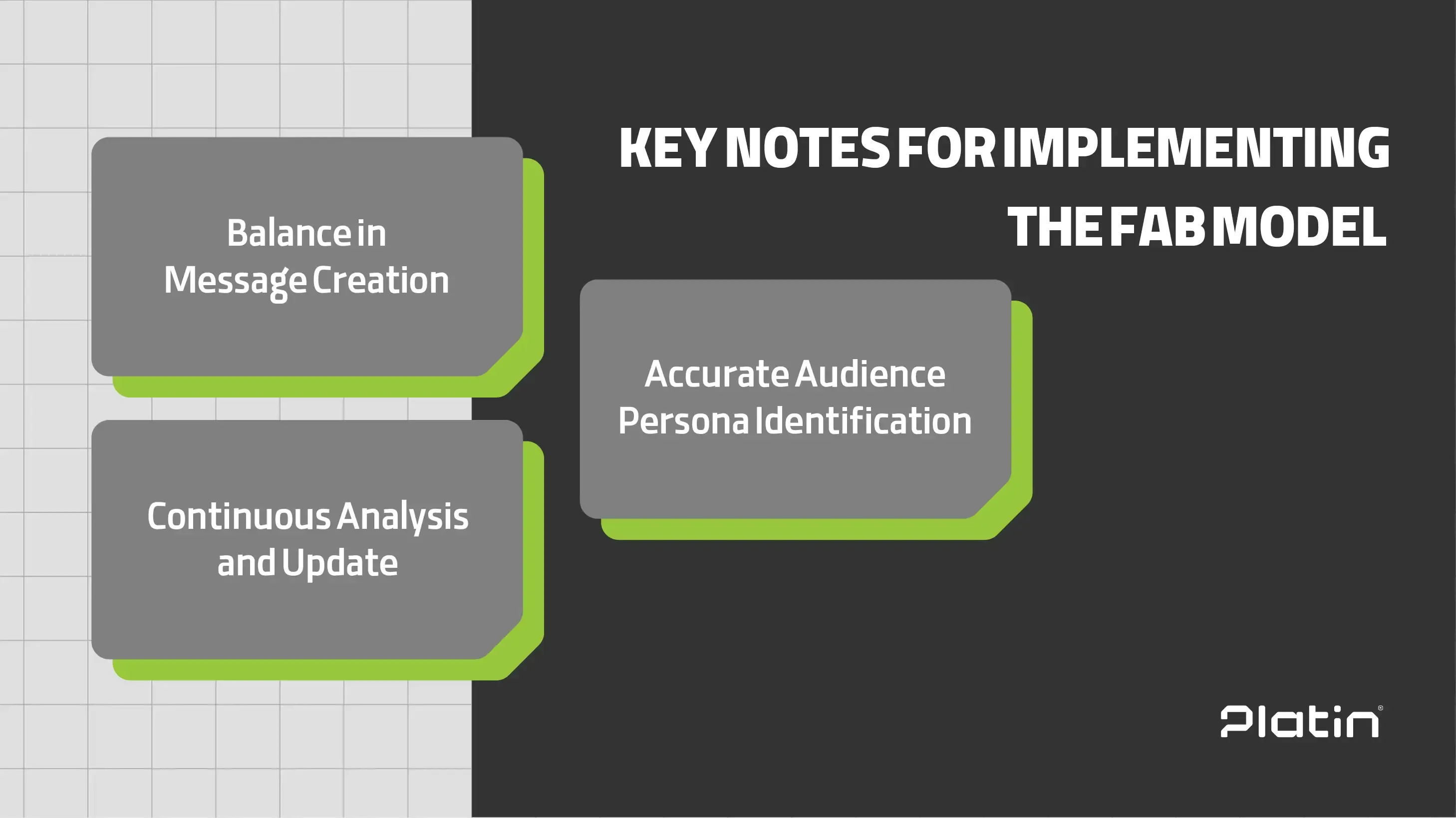
Examples of FAB Model Applications in Different Industries
Initially developed in direct sales, the FAB model has evolved into a standard and effective framework in marketing. Research analyses and innovative examples published between 2023 and 2025 highlight the increasing importance of this model in marketing and sales strategies.
Technology Industry:
For marketing a laptop, saying “Equipped with a 1TB NVMe SSD” is a feature. The advantage is much faster program loading and data transfer. The ultimate benefit for the customer is time-saving, higher productivity, improved user experience, and increased satisfaction, leading to higher sales.
Healthcare Services:
In promoting a specialized dermatology clinic, a feature could be “Using FDA-approved laser devices.” Its advantage is higher effectiveness and less pain. The ultimate benefit for the patient is greater confidence, comfort during treatment, and long-term trust.
Tourism Industry:
A travel agency might say “Offering special tours with Persian-speaking local guides.” This is a feature. Its advantage is better destination understanding and a sense of ease. The ultimate benefit for the customer is a deeper, stress-free travel experience, which can lead to differentiation from competitors and repeat business.
Case Study: Step-by-Step Implementation of FAB for a Technology Product
To better understand how to use the FAB model in marketing messages, reviewing a globally recognized product can provide a clear mental framework. The product examined here is the Dyson V15 Detect cordless vacuum, which leverages advanced technologies and serves as a suitable example for applying this model in marketing.
- FAB Components:
For introducing this product, Dyson can utilize the three key components of the FAB model:
- Features: Laser dust detection sensor, powerful digital motor, LCD display, 60-minute battery life.
- Advantages: Higher cleaning precision, improved device performance, reduced need for frequent charging, better user control.
- Benefits: Time savings, reduced cleaning stress, greater comfort in living spaces, and ensuring a healthier home environment for the user.
- Implementing FAB in Content:
Steps Dyson could follow:
- Identify and document features: Gather technical and design specifications.
- Analyze advantages: Explain how each feature improves performance or user experience.
- Extract benefits: Translate advantages into tangible or emotional benefits that directly address customer needs.
- Transform into marketing messages: Use simple, emotional, and persuasive language to convey these benefits through advertisements, website descriptions, social media, or promotional videos.
Example message:
“With the Dyson V15 Detect, clean even the dust you can’t see. Enjoy a healthier, calmer home without the need for constant recharging.”
- Key Points for Successful FAB Execution:
- Accurate Audience Persona Understanding: By understanding target customers—such as parents concerned about children’s health, allergy sufferers, or tech enthusiasts—Dyson can design more precise and consistent messages.
- Smart Feature Selection: Instead of listing all features, focus on key features most relevant to the audience’s emotional concerns, ensuring clarity and impact.
- Continuous Analysis and Update: Dyson can monitor user feedback and performance data to adjust messages to audience perception and improve communication experience.
FAB vs. Similar Models
The FAB model is often compared to frameworks like AIDA or USP. While AIDA focuses on the psychological journey of decision-making and USP emphasizes differentiation from competitors, FAB focuses on how product value is communicated. It ensures that the message persuades and influences the audience, fostering trust, increasing sales, and creating a lasting emotional connection. Combining these models in campaign design can yield highly effective results.
Ultimately, the FAB model is one of the most effective tools to shift from an inward-focused view to a customer-centric approach. It enables marketing managers to move from merely presenting features to highlighting real benefits—where the customer’s final decision is shaped, and trust begins. FAB creates a common language between brand and audience, shifting focus from “what we have” to the crucial question: “What impact does this product have on your life?” With this perspective, messages are no longer purely descriptive but tied to customer needs, desires, and emotions. This leads to differentiation from competitors, improved customer experience, and increased sales. By applying the FAB model correctly in marketing messages, products come to life, messages become tangible and persuasive, and customer experience reaches a higher level. The result is a human, emotional, and lasting connection between brand and audience—beyond purchases, fostering loyalty and long-term trust.
Checklist: Is Your Marketing Message Designed According to the FAB Model?
Before publishing any marketing content (ad copy, product introduction, video, social media post), ask yourself these five simple questions:
- Are the main features of the product or service clearly defined?
- Is the advantage of each feature explained?
- Are the final benefits for the customer expressed in simple and tangible terms?
- Is your content written from the audience’s perspective rather than just the brand’s?
- Do the messages persuade or merely inform?
In today’s saturated market, simply stating “what you have” is not enough; you must show the audience “why it matters to them.” Platin Communications and Marketing Agency, with expertise in customer-centric content creation, helps you redesign your marketing messages using the FAB framework—so the audience not only understands your product but wants to buy it. If you seek greater trust, higher sales, and a brand that stands out in your audience’s mind, contact us today.
This article is based on: